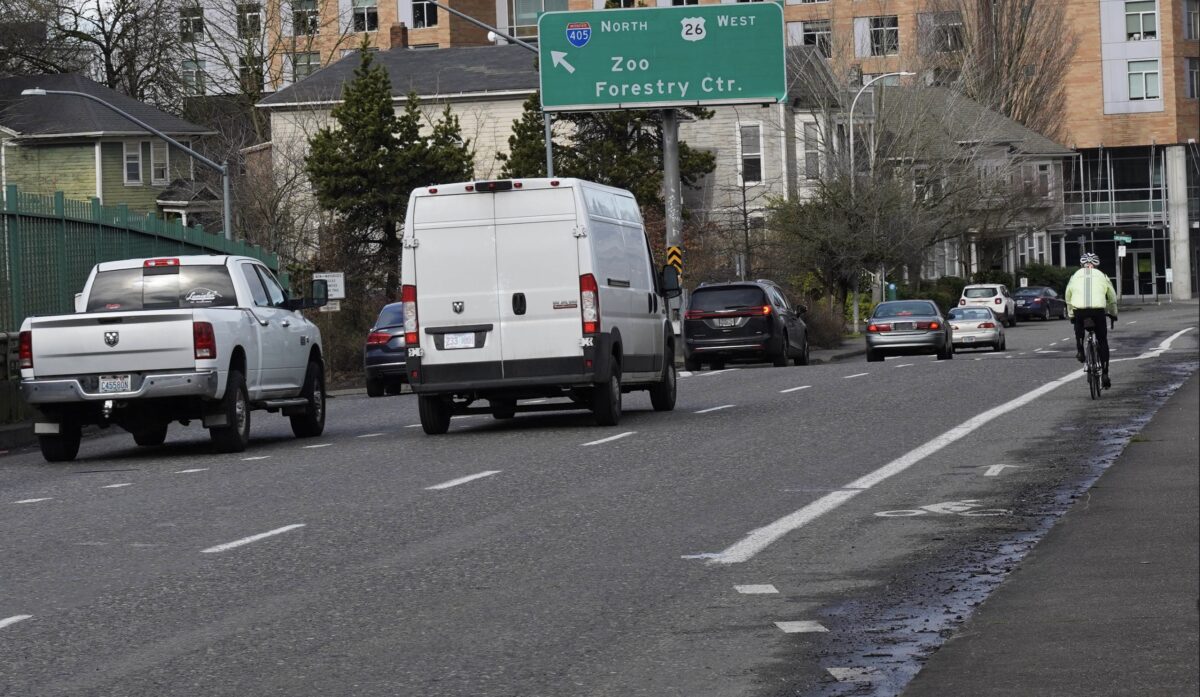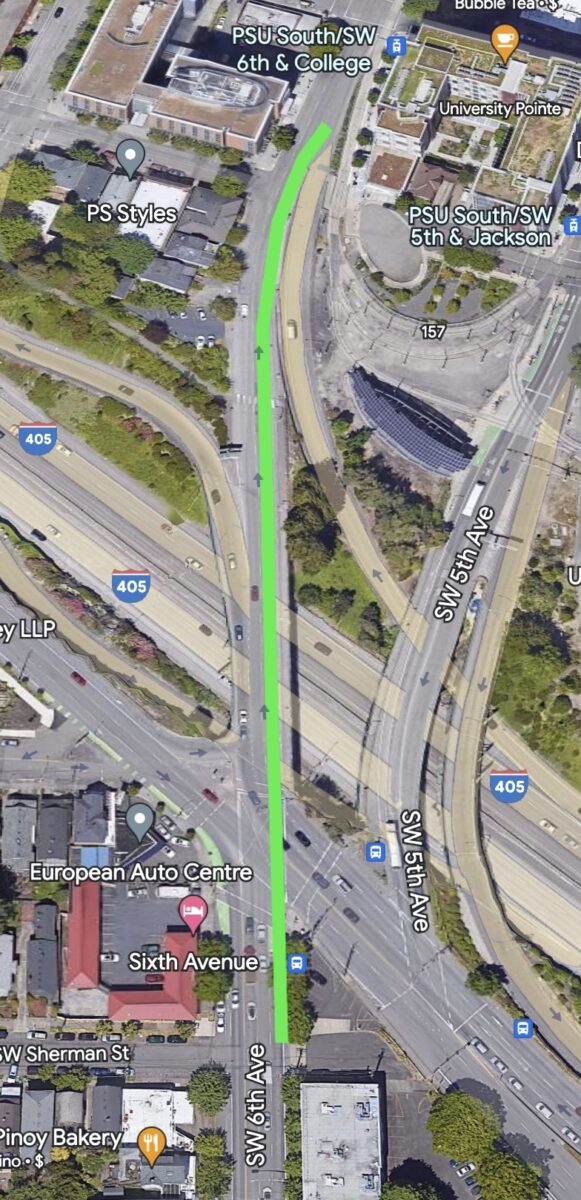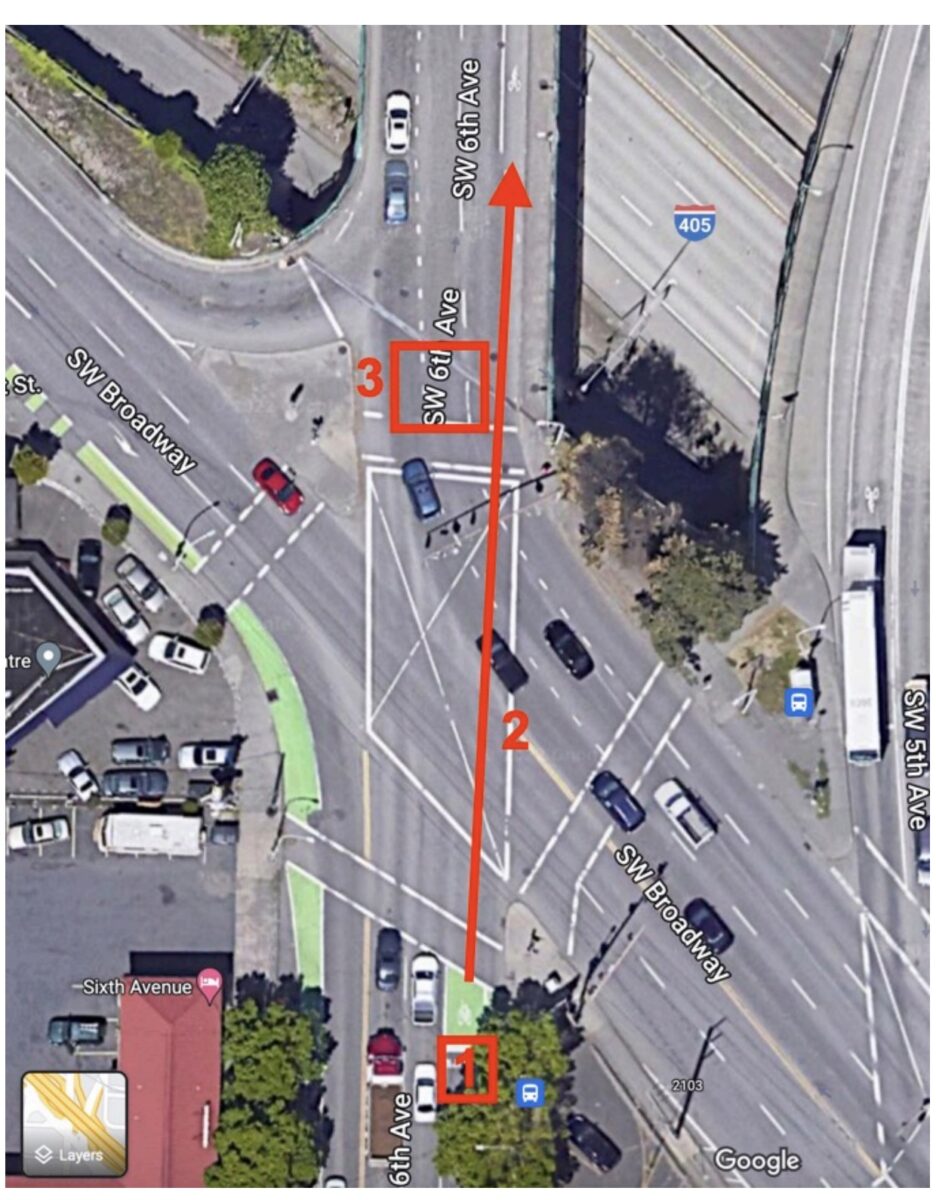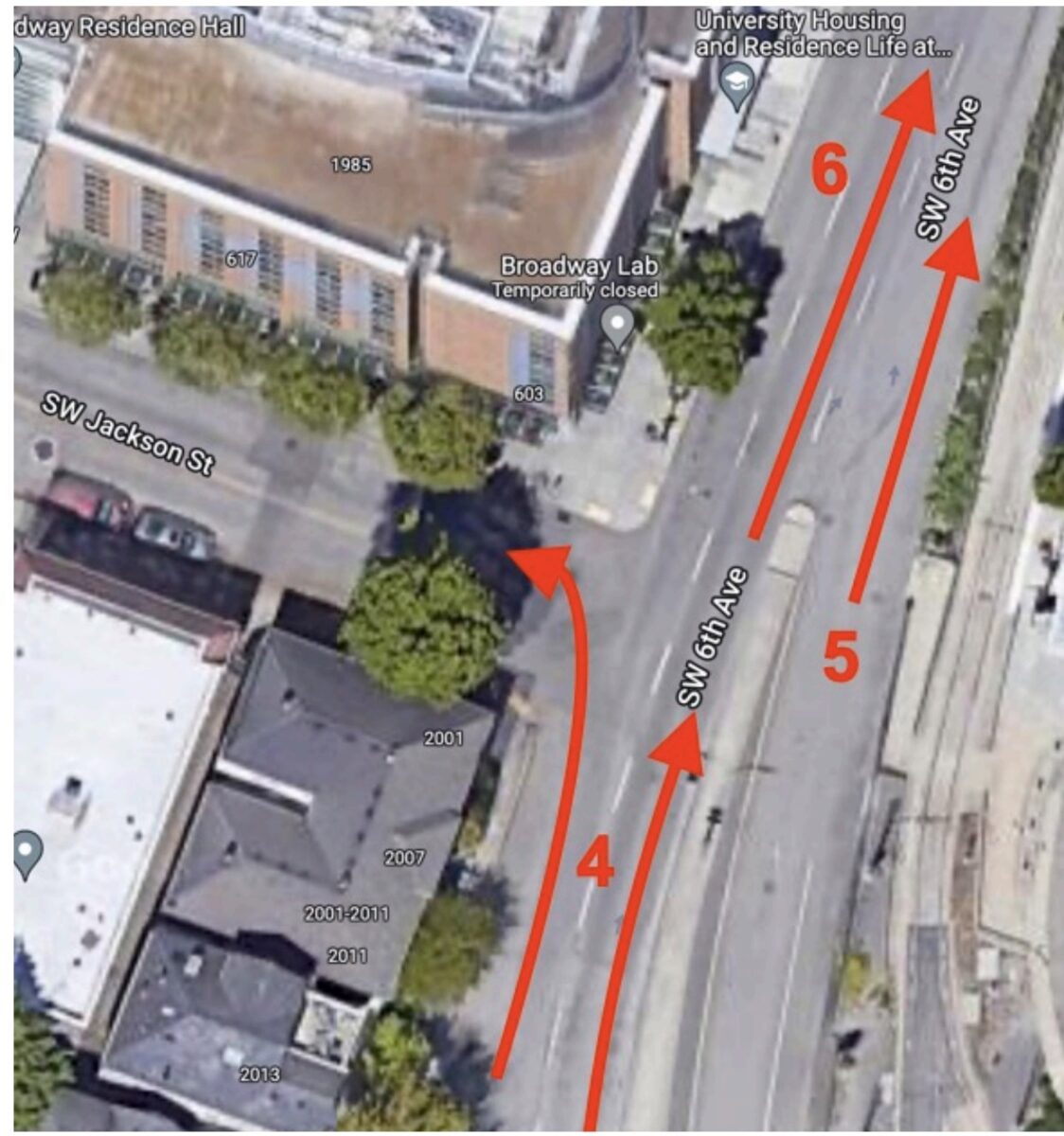Keith Liden is not your average bike advocate. As we shared in our profile last fall, he’s been a thorn in the side of Portland Bureau of Transportation staffers for 30 years — many of them as a member of the city’s Bicycle Advisory Committee.
A few weeks ago I met up with Liden to take a closer look at one of his many personal advocacy quests: closing gaps on Southwest Terwilliger Boulevard. Terwilliger is very important street. It’s one of the two main veins that connect southwest Portlanders to downtown and other destinations. It’s also much lower stress than its parallel, state-owned cousin, SW Barbur. Terwilliger is classified as a “major city bikeway” in Portland’s Transportation System Plan and provides a direct connection to the VA Hospital and other medical buildings. Beyond its utility, it’s a beautiful parkway with views of the Willamette River (and far beyond) that was recently listed on the National Register of Historic Places.
Compared to many other important bike route streets in Portland, Terwilliger is in fine shape. Liden knows that. He just has a few quibbles that, if addressed properly, could take Terwilliger from good to great. And he’s got a good point. Portland has a lot of good bikeways, but very few great ones (which might be one reason why our ridership numbers have fallen).
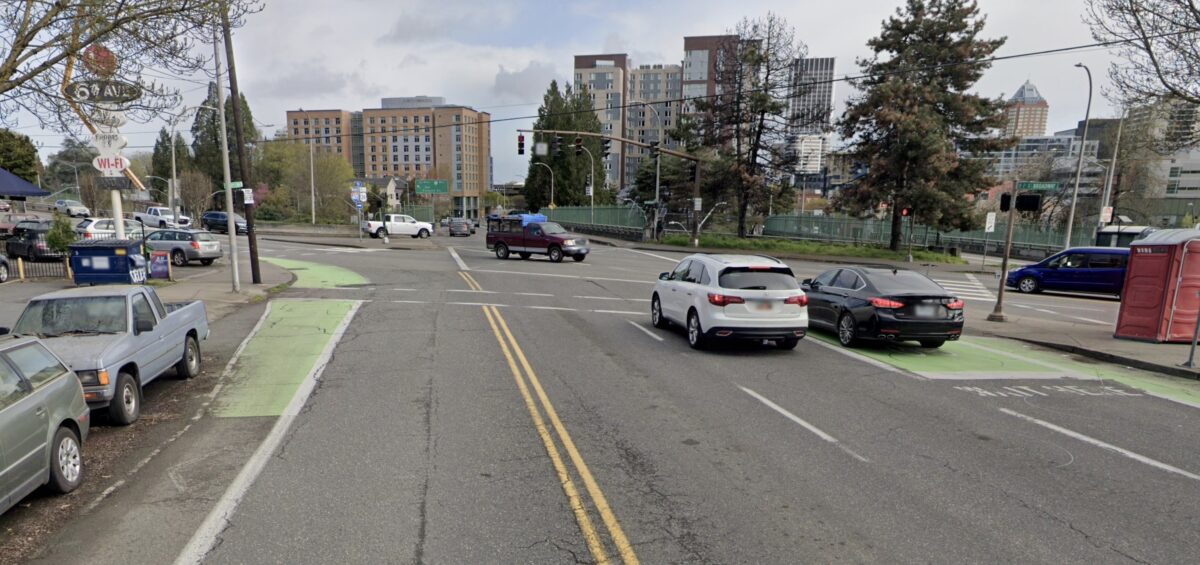
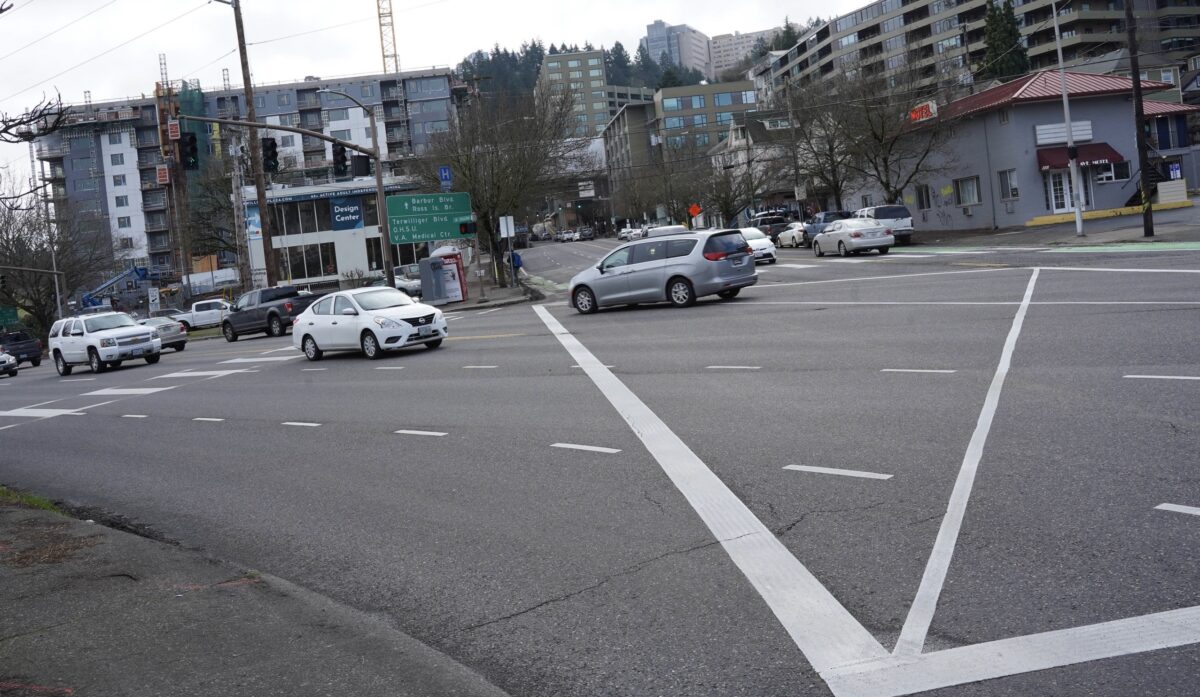
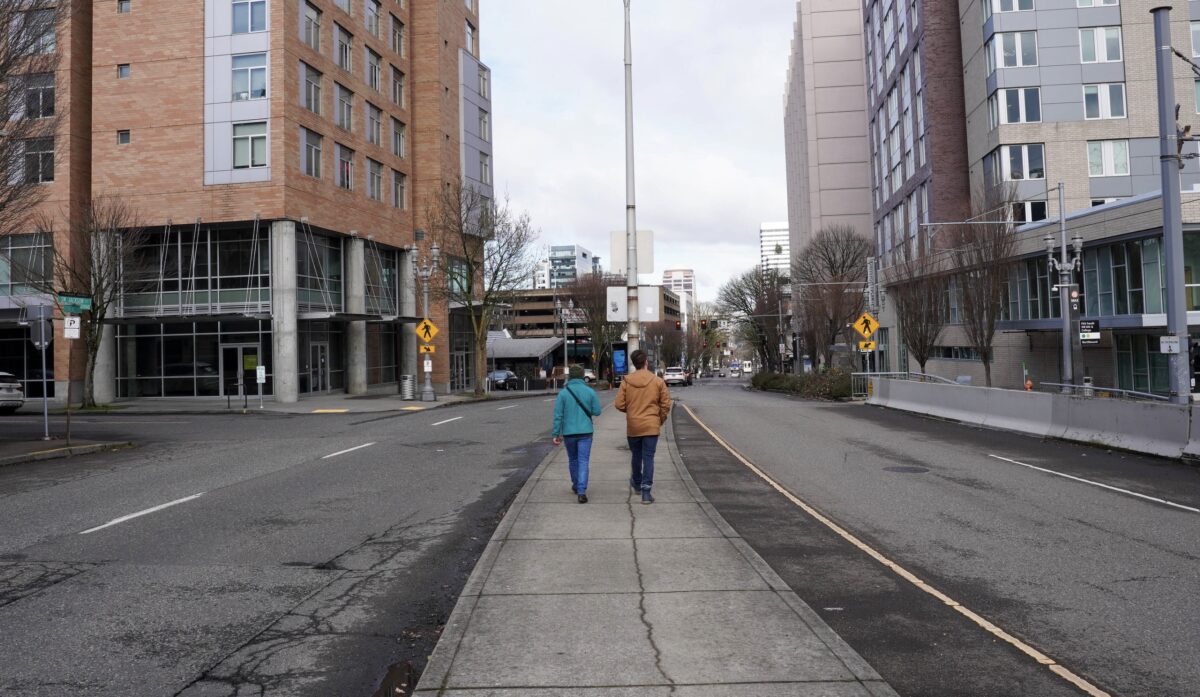
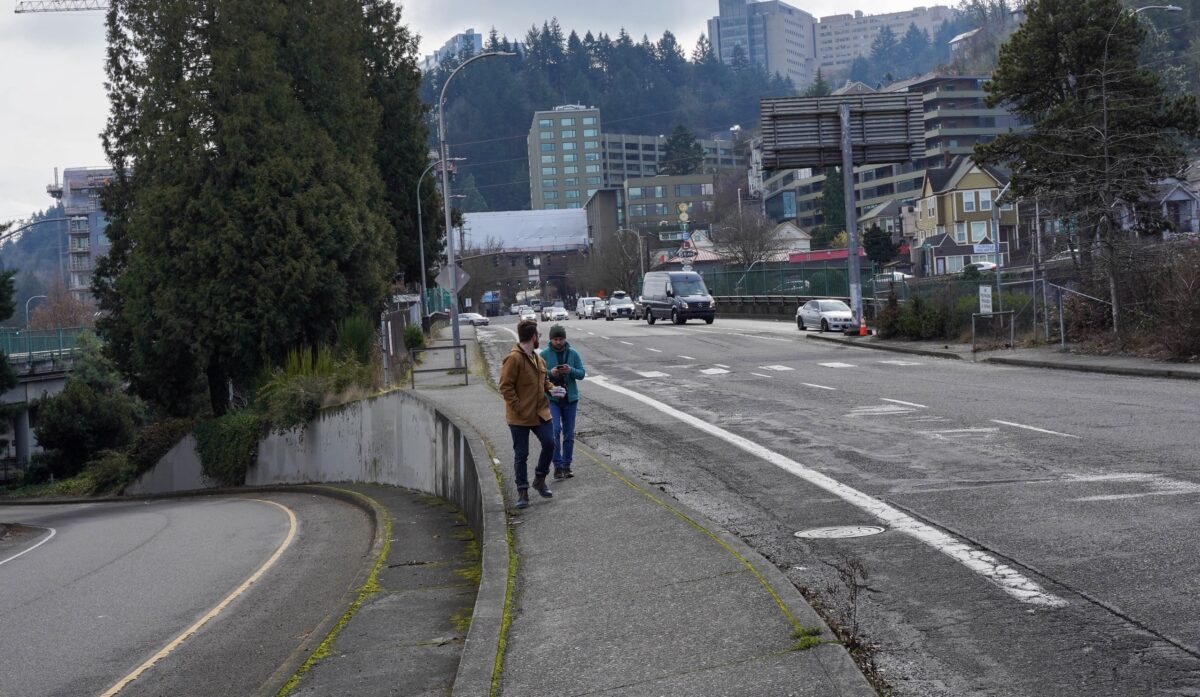
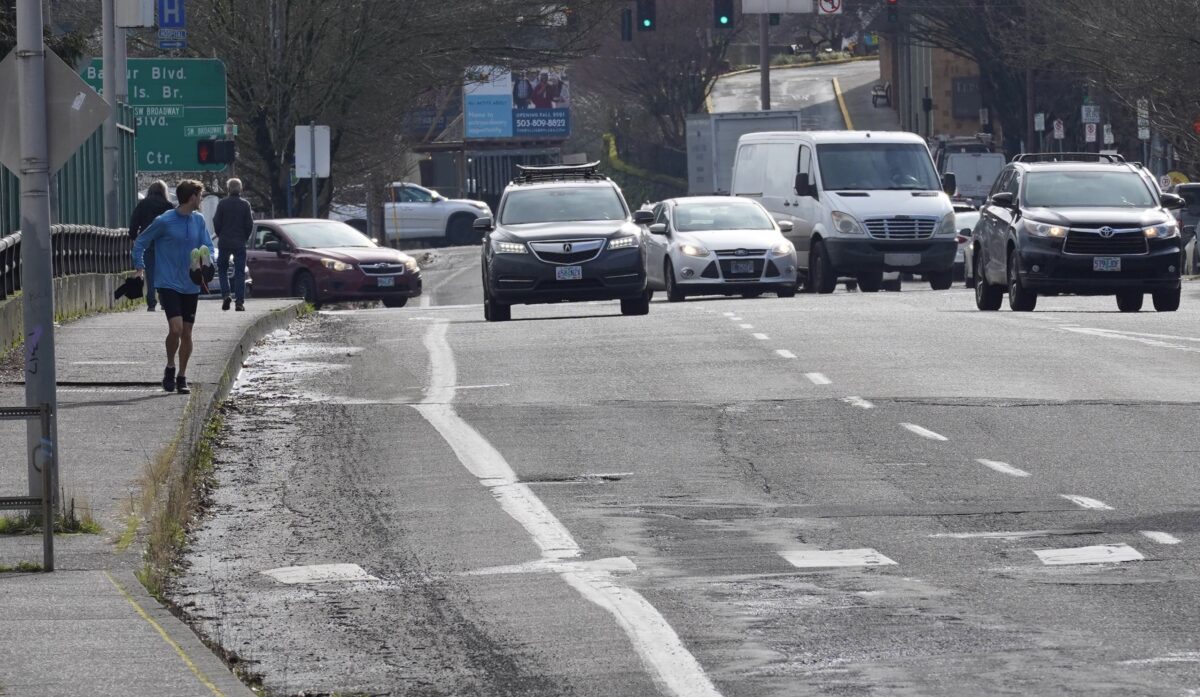
In November 2022 Liden sent a 9-page memo to PBOT planners titled, “Terwilliger gaps – time to fix them!” “Terwilliger is one of the most heavily used bike routes in SW Portland,” he wrote. “The existing gaps have been identified as a high priority in virtually every transportation-related plan since the mid-90s, but oddly, correcting the gaps has received relatively little attention over the past quarter century.”
Liden’s memo detailed the existing conditions and his proposed solution to four gaps. Today l’ll focus only on the one at SW Broadway (Terwilliger turns into SW 6th just south of this intersection).
“This one’s personal for me,” Liden shared as we waited in a green bike box at a red signal headed northbound on SW 6th at Broadway. As drivers roared by, it felt like we were standing on a tiny island atop a tumultuous sea. “I got hit by somebody taking an illegal right hand turn right here [where no right turns are allowed]. The guy took me by surprise. I did a cartwheel right out in the middle of the intersection. Luckily I had a helmet on.”
“This one’s personal for me. I got hit by somebody taking an illegal right hand turn right here.”
When I shared a video about this intersection last week (above), a lot of folks chimed in to say how terrible it is. Set on a diagonal, and with four-to-five wide lines in all directions, the widest section of SW 6th and Broadway is about 165 feet from curb-to-curb. Adding to the stress is that it’s adjacent to I-405 freeway onramps. And if you make it the 104-feet across Broadway, you enter a narrow, unprotected bike lane on the freeway overpass. Then, just as you begin to enter downtown and begin to breathe easy, the bike lane ends just before SW Jackson. Then, as you try to decide what to do, you realize there’s a freeway off-ramp lane on your right and you’re dumped in the middle of the street sharing lanes with drivers. And those drivers on your right? Many of them want to merge across two lanes (including the one you’re in) to go left at SW College. It’s a complete “F-you” to bike riders.
Seriously? This is how we welcome people into our great city?
To their credit, PBOT knows about the problem. They identified it in the Southwest in Motion plan (Top Tier BP-02) and the Transportation System Plan (projects #20168 and #20167). One of the proposals would extend the bike lane to Jackson by removing some on-street car parking spaces on the west side of 6th.
For an estimated $15,000, PBOT says they could do this (from SW in Motion plan):
Liden says that change would be welcome, and is long overdue, but here’s what else he’d like to see:
1. On the south end of the 6th Ave. bridge, illegal right turns at Broadway [where he was hit] need to be addressed. I believe part of the problem relates to drivers who are not familiar with this area (OHSU visitors). Once they see they’re about to get sucked into downtown, they turn right to escape. They could be helped with a directional sign before Sheridan saying something like “To Ross Is. Br. /26 East & Barbur Next Right.” Directional arrows on the 6th Ave. pavement just south of the bike box could also help, and/or the overhead signage could be made more obvious
2. Provide green dashed markings connecting the south bike box with the striped bike lane on the bridge (Figure 2).
3. To complement #2 above, eliminate the curved travel lane striping immediately south of the bridge that guides NB motorists to drift right into the bicyclists’ path when it’s not necessary.
4. Shift vehicle lanes west and enhance and extend the existing bike lane (as proposed in SWIM project BP-02).
5. Prohibit the left merge from the 6th ramp between Jackson and College. Motorists intending to turn left at College typically look at traffic on their left rather than pedestrians crossing in front of them. This traffic only would need to go one more block to Hall to turn left, and it would help mitigate the crazy merging that occurs between Jackson and College.
6. Visually extend the bike lane ending at Jackson with green skip striping to College.
PBOT has done some of the preliminary planning work on this gap, but funding challenges mean it likely won’t get attention any time soon. At a budget work session today, Interim PBOT Director Tara Wasiak told Mayor Ted Wheeler and the other commissioners that her agency is in a “revenue crisis” with a 5-year forecast that demands a $60 million cut in discretionary resources and a plan to cut $6.3 million and 16 staff positions from their 2023-2024 budget.
Liden says his suggestions aren’t expensive because they’re mostly just pavement markings, striping, and signs (and he acknowledges it would take a much larger investment to bring the crossing up to ADA standards). He understands the perilous budget situation and has heard PBOT talk about it for many years. But for advocates like Liden hope and persistence is part of the job and he feels where there’s a will, there’s a way.
“This condition has persisted for way too long,” he says, “but let’s start somewhere.”

